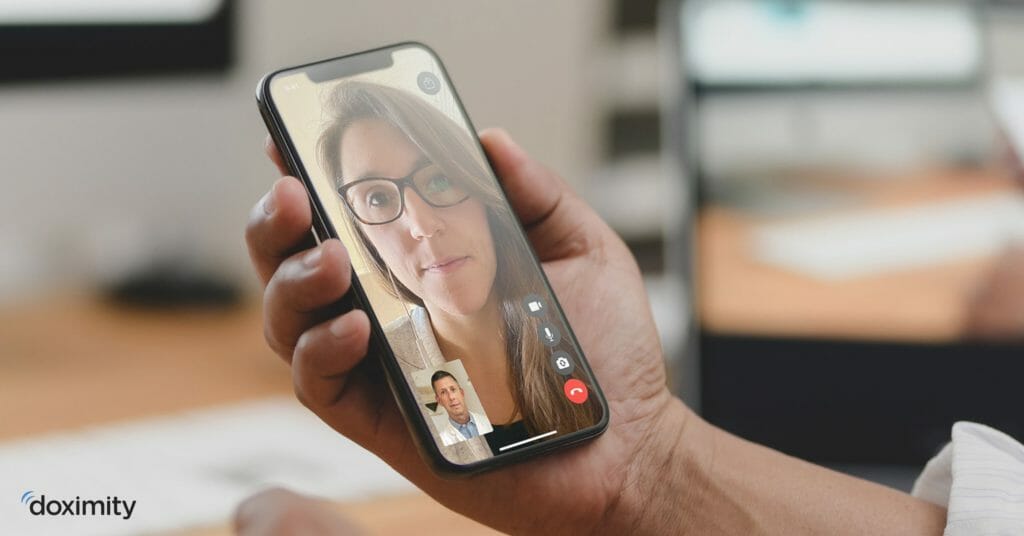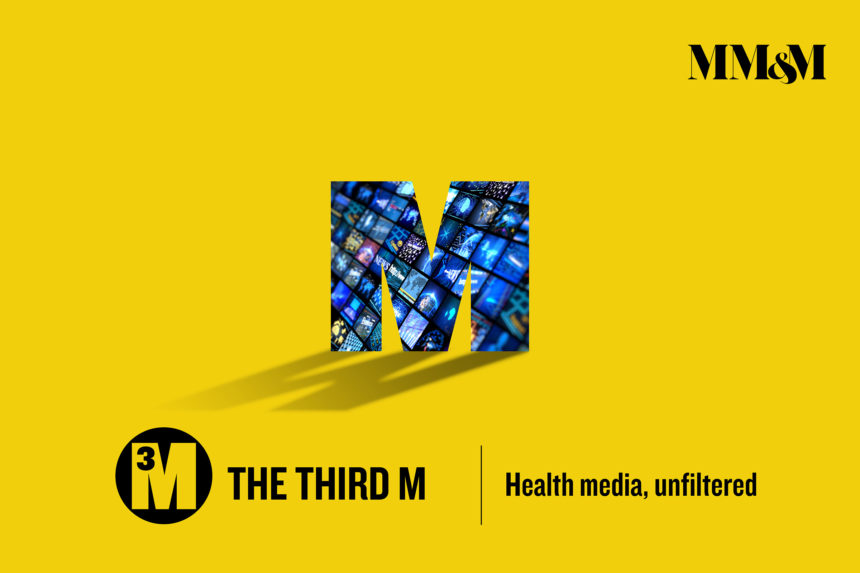Just as the world has gone all-Covid-all-the-time, so too has Doximity – and with good and obvious reason. As many of its members have seen their professional lives upended, the network has proven an invaluable source of information on all aspects of the coronavirus crisis that touch physicians, ranging from workflow considerations to research vetting to stress management.
In advance of tomorrow’s formal launch of Dialer Video, MM&M spoke with Doximity co-founder Dr. Nate Gross about the platform’s evolution during the last two months. This transcript has been edited for length and clarity.
MM&M: Pre-pandemic, what was the state of the union at Doximity?
Nate Gross: We were tackling problems with our medical advisory board, ranging from lifelong learning to helping physicians connect with the perfect research counterparts at conferences to burnout and how digital peer connection could assist those who need it. All of those projects continue to be extremely important – but as you can imagine, there was a tremendous shift shortly thereafter.
MM&M: How sudden was it?
Nate Gross: There were policies implemented at the community or national or individual institution level that changed a lot of our conversations. Then there was a dramatic shift overnight in the type of patients being seen.
From a physician-workflow standpoint, our members had to deal with tremendous rapid change. From a knowledge standpoint, it’s been a little more gradual. Our members have been reading and discussing and contributing to the body of knowledge around Covid-19 from the beginning of all this.

MM&M: Which leads into my next question, which is whether Doximity has made conscious changes during the last two months or whether change has been thrust upon you.
Nate Gross: It has most certainly changed, in that we’ve seen a dramatic increase in the day-to-day use of the platform and of features like Doximity Dialer. Before the pandemic, we were facilitating around a million phone calls a month. Now we’re seeing an average of one million calls per day.
There’s been a substantial increase in physicians using these sorts of workflow tools. Work-from-home has become the new normal for many physicians, but there are also new practice settings being thrust on doctors who are staying at the hospital.
LD: How about the Doximity news feed? How different is it today than it was two months ago?
Nate Gross: There’s been more than a 60% increase in newsfeed engagement – but even before this, it was one of the fastest-growing products on the platform for several years. It’s how the majority of physicians now get access to not just the latest medical knowledge, but medical knowledge that is individualized to their unique clinical interests and patient populations.
Starting a few months ago, detailed information about Covid-19 started pouring in and getting parsed in that newsfeed; it all started to shift towards coronavirus. And if you look at what was actually moving the needle for doctors – what they were choosing to share and consume and interact with the most – it falls into a few different categories.
MM&M: What were they?
The first was around the guidelines, resources and distillable information that could help them give the best care to their patients when the goalposts were moving nearly every single day, on both what they had to solve and what information was out there to solve it. The newsfeed has become a resource that physicians could carry around to make sure they had the latest information at hand, particularly if they didn’t have a background in that particular area of infectious disease.
Another category that surged was peer support. There were physicians on the frontline with extensive backgrounds in infectious disease or critical care or emergency medicine, but also physicians from other specialties who were stepping up for the first time. They didn’t have a background in the ICU and were being asked to work there, or maybe they just needed assistance in their outpatient setting to protect other patients and staff members.
Another category that surged was balancing breaking research. We have had tens of thousands of articles published on coronavirus over the past couple of months, so there has been a need to balance the pressure for progress with the importance of prudent evaluation – particularly when some of these studies are coming from small sample sizes or were published before there might’ve been a full peer-review process. The online community can step up to make sure important information gets out there, and that peer-review process can happen in a true peer setting.
What’s been most interesting is that the authors of some of these major studies are in the discussion feeds on Doximity, answering questions in real-time. It’s no longer this monthly letter-to-the-editor format; it’s the lead author from a study coming in, getting feedback, answering questions, figuring out how to evolve their subsequent follow-up studies and sometimes passing along practical information. Because the folks that did the research, particularly in the early months, were the ones that saw the highest volume of patients. And that meant that they had key clinical insights that they could share with physicians based in the cities that were about to be hit.

MM&M: Has the tenor of those conversations changed during the last few weeks? Have they been respectful, or maybe even a little challenging?
Nate Gross: The good news about a professional and closed network is that users know that everyone has each other’s back. And so there’s an element of candor and trust and calm, but sometimes also prudent urgency.
If I just looked at what was being discussed on the newsfeed this morning, I’d see discussions around the lack of PPE at many of the hospitals that our member physicians are being asked to work at – but I’d also see physicians from the CDC answering questions from their perspective. In all cases there has been a level of grounding that physicians aren’t able to find on other consumer platforms, whether that’s grounding in the data or in actionable insights.
MM&M: How about changes from an operational standpoint?
Nate Gross: Honestly? Those changes have been relatively easy for Doximity to implement, given that we are a technology company. Being able to ask our physician members what they need most and have a distributed team of people ready to step up to those initiatives is our compass. We launched dedicated teams to build new products specifically for solving physician needs during coronavirus.
MM&M: When you asked your members what they needed, what did they tell you?
Nate Gross: A common theme was always ease of use. Our physicians are being asked to practice in dynamic settings, and they need tools that work for everyone on their care team and can be rapidly adopted. It wasn’t just about building the functionality; it was about leveraging our design and physician teams to make sure everything was as easily adopted as possible, so that all of our physicians’ brain cells could be applied towards their patients and not towards figuring out complex software.
On the flip side, our physicians told us that they had entire care teams that were stepping up to meet the needs of their patients during the pandemic, whether nurse practitioners or PAs or pharmacists or respiratory therapists or social workers. At the request of our members, we’ve opened up our dialer functionality – the feature that enables doctors to contact patients from their cell phone while protecting their personal number and setting the caller ID to their hospital or office line. Because more than ever this is, this is a team sport.
Early on we started a job market to help physicians find the perfect job for their long-term career goals and personal preferences. So we took that and we made it free for Covid-19 openings because there’s a massive supply-and-demand crunch in different areas of the country. Physicians are needed quickly and we want to get rid of any possible barrier to that process. Any hospital that has an urgent open coronavirus-related position is able to get that posted on Doximity and quickly distributed to our network
MM&M: And now video is going to be a bigger part of the mix.
Nate Gross: Yeah, video is now one of the most important things a physician or caregiver can have to reach patients with hypertension or that chronic disease must still be cared for. Patients need to have trust with their physician, and that is sometimes harder to get over phone calls. If patients can’t come into the office at the same pace that they could before and without risks, physicians want to be able to make sure that they maintain those relationships and maintain that trust.
Everyone is rapidly adapting to a telemedicine world. We knew that we had both the infrastructure and the user base to quickly become what I hope will be the best offering for physicians.
MM&M: How do you make it work in a way that’s different and/or better?
Nate Gross: Dialer Video is a simple telemedicine tool that enables physicians to video-call their patients in a reliable and a secure way from their own smartphones. And if it sounds like the same value proposition of Doximity Dialer, in many ways it is – it’s just upgraded to video, which is still relatively new to the world.
There is no download required and no app install required. When the physician is ready to initiate a phone call, the patient will receive a text message where they opt into the call and then, boom, they’re in the room with the physician. These calls achieve HIPAA compliance, they’re encrypted and they’re kept private. There’s zero additional setup or software installation for the physician or anyone else in the physician’s organization. It just works.
There is a tremendous challenge in getting it right. Doctors don’t want to be IT support for the entire process, but unfortunately that’s what they were having to do during the first few weeks of the pandemic. Everyone had to install software and the first three-quarters of a call were spent setting up accounts and things like that.
MM&M: How does Doximity take what it has learned over these last couple of months and build on it?
That’s a question everyone is putting a lot of thought into right now. I think we have helped make entire populations comfortable with the efficiencies of tele-care. How much of a doctor’s care moves to telemedicine in the future will vary by specialty, and a lot depends on whether or not current reimbursement rates for telemedicine are here to stay.
All that said, our physicians expect to be leveraging telemedicine. These groups are looking to continue to care for patients with non-COVID-19 conditions – their cancer and their heart disease and their respiratory disease. They’re looking to harness the learnings from this pandemic to help those patients have a better experience in this new world.
We believe this is a structural shift in how care will be delivered moving forward. And absolutely, thanks to our penetration in the physician market, I believe Doximity is extremely well positioned to help.







